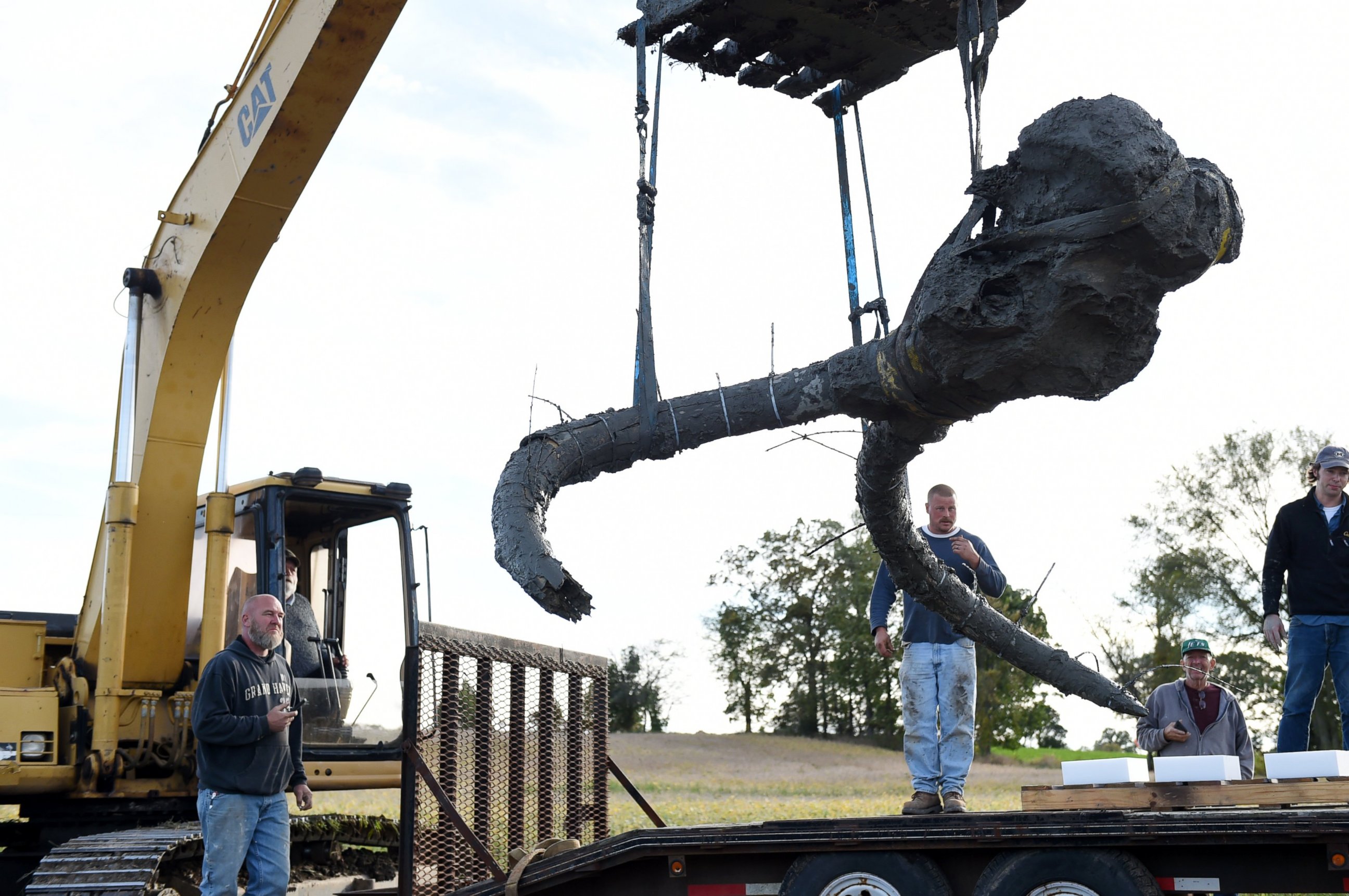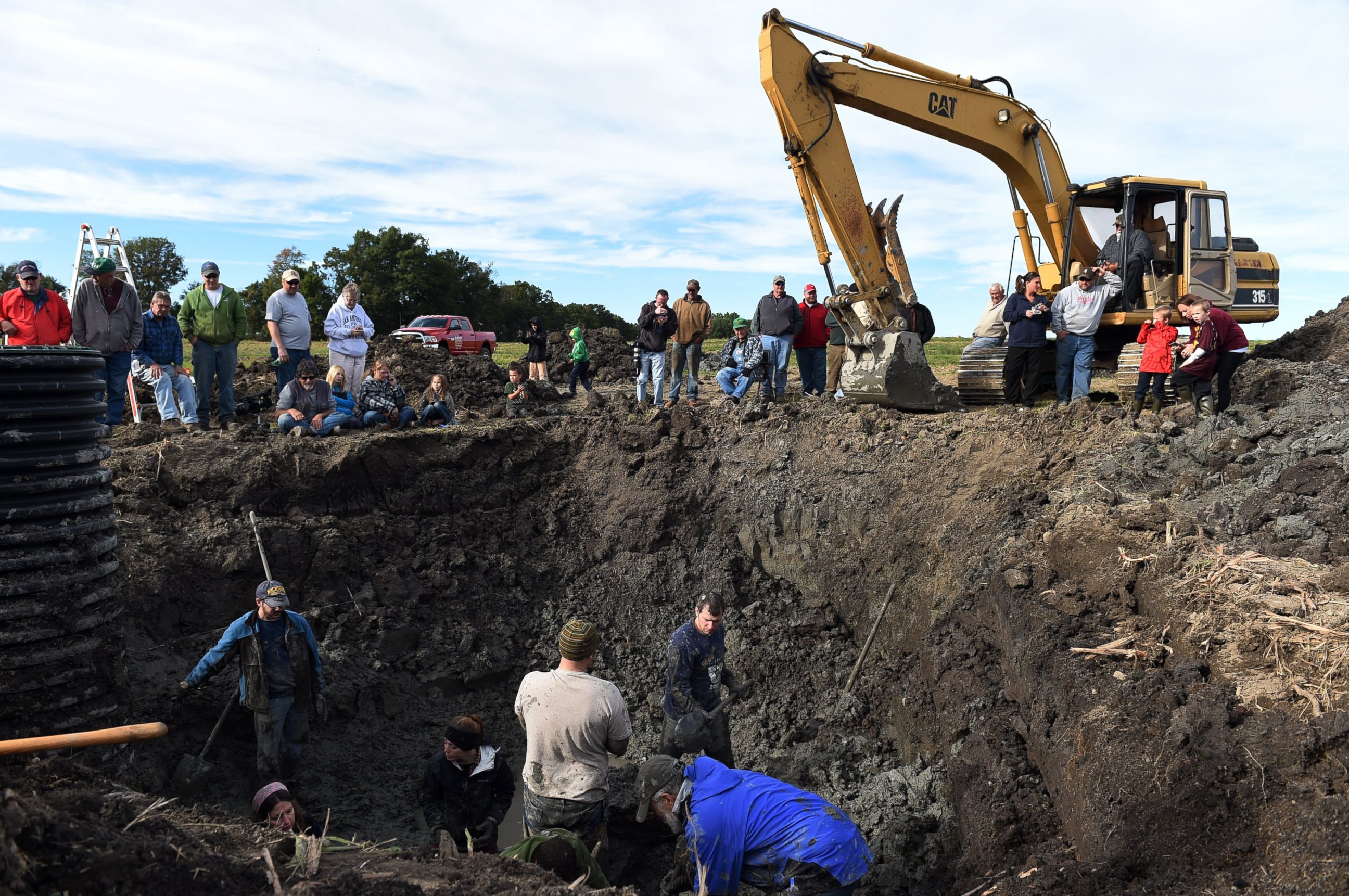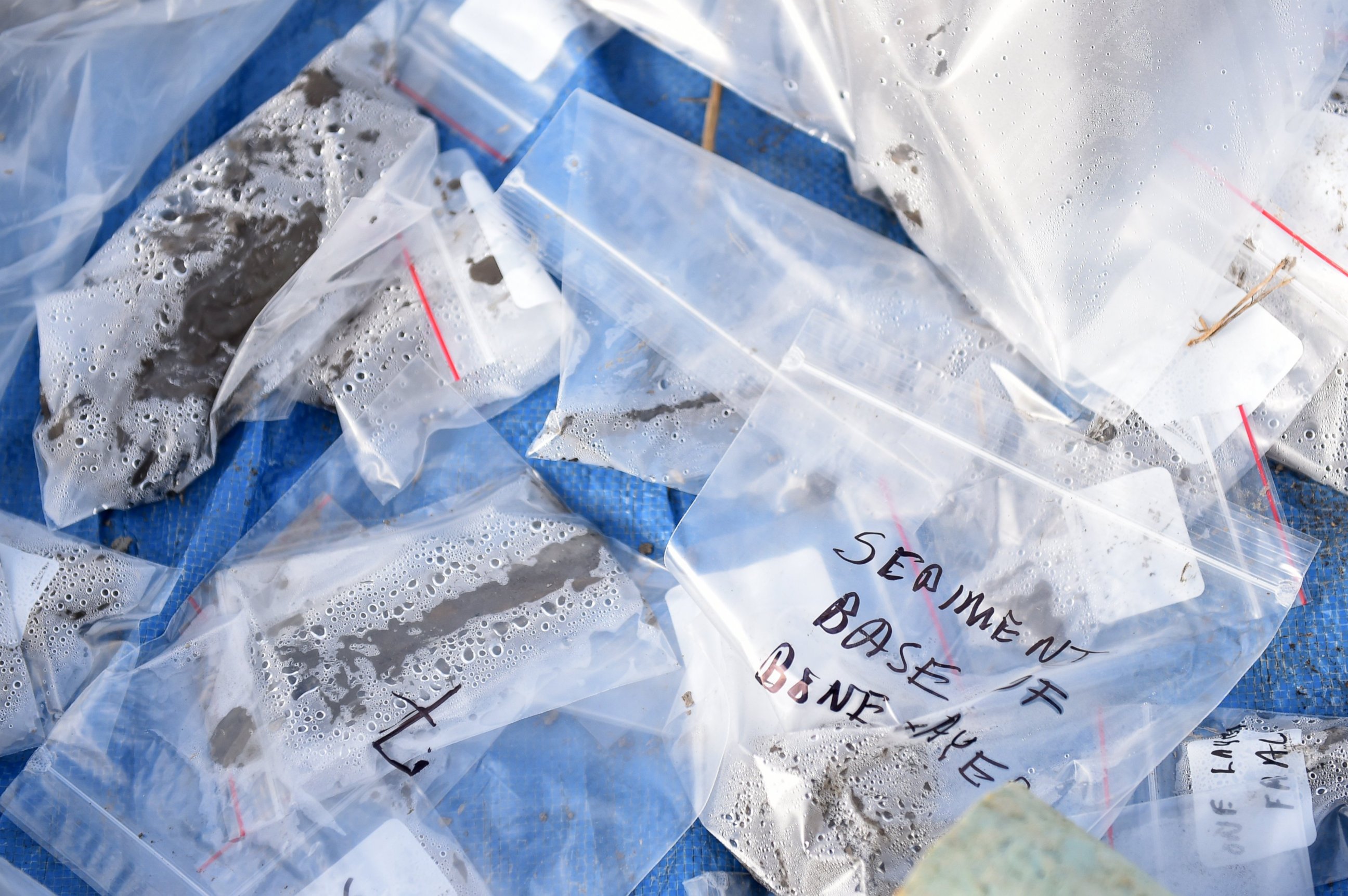Michigan Farmer Unearths Bones of Rare Mammoth Hybrid From Nearly 15,000 Years Ago
The mammoth was likely butchered by early human hunters nearly 15,000 years ago.
— -- A farmer near Ann Arbor, Michigan, recently unearthed the skull, tusks and other bones of a mammoth possibly butchered by early human hunters nearly 15,000 years ago, according to a paleontologist at the University of Michigan.
Farmer and landowner James Bristle made the discovery on Monday night when he and a friend were digging in one of his wheat fields to install a drainage pipe, according to a news release sent to ABC News by the University of Michigan. Bristle's backhoe had bumped into a 3-foot-long bone, later identified as part of a mammoth pelvis.
Bristle later contacted Daniel Fisher, who teaches at UMich and directs the university's Museum of Paleontology. Fisher told ABC News he went over to the field Wednesday night and confirmed that the bones were from a mammoth that was a rare hybrid between a woolly mammoth and Columbian mammoth that was likely at least 40 years old when it may have been killed 11,700 to 15,000 years ago.
"We think that humans were here and may have butchered and stashed the meat so that they could come back later for it," said Fisher, who is also a professor in UMich's Department of Earth and Environmental Sciences and the Department of Ecology and Evolutionary Biology.

Fisher said Bristle only had one free day to do an excavation due to the busy harvesting season, so work began immediately on Thursday.
Twenty percent of the mammoth's bones, including its skull, two tusks, teeth, pelvis, shoulder blades and numerous vertebrae and ribs were recovered by dozens of Fisher's students and Bristle's friends and family and local excavator.
"When my 5-year-old grandson came over and saw the pelvis, he just stood there with his jaw wide open and stared," Bristle said, according to to the university's statement. "He was in awe."

Fisher's team worked from sunrise to sunset with the help of Jamie Bollinger, a local excavator who told ABC News he donated both his equipment and expertise on site.
"I've been digging up hundreds of thousands of pounds of dirt for the past 45 years, and I've never had an experience quite like this," said Bollinger, who runs Bollinger Sanitation and Excavating in Chelsea. Michigan. "We all got in the mud and had a lot of fun."
The bones are currently in a shop on the farm, and the pit has now been filled in, Fisher said. He added that in the United States, specimens found on private property are the property of the landowner.

"We're so thankful to the landowner for allowing us to come and we'd love to be able to do even more research," Fisher said. "These rare findings are important in enhancing our knowledge of the history and biology of these animals and lifestyle and habits of early humans. Studying this mammoth could also potentially tell us more about the climate system, how it works and what kinds of changes happen over time, which is something very relevant to us right now."




